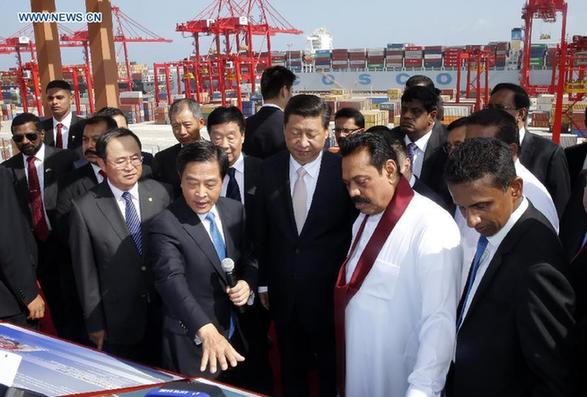8 risks to the Silk Road Fund
- By Wang Tianling
 0 Comment(s)
0 Comment(s) Print
Print E-mail China.org.cn, November 24, 2014
E-mail China.org.cn, November 24, 2014
|
|
|
Chinese President Xi Jinping (C) and his Sri Lankan counterpart Mahinda Rajapaksa (2nd R, front) visit the Colombo International Container Terminals, a China-Sri Lanka joint venture, in Colombo, capital of Sri Lanka, Sept. 17, 2014. [Xinhua/Ju Peng] |
China put forward two major initiatives to promote trade with its neighbors: the Silk Road Economic Belt and the 21st Century Maritime Silk Road (known as the Belt and Road Initiative for short) and the US$40 billion Silk Road Fund.
However, given the risky climate in which we are living and the experience Chinese enterprises have gained overseas, we must be aware that professional risk management in compliance with international norms is key to the development of both these initiatives.
There are eight risks China needs to consider.
First, China should avoid an investment frenzy caused by grand ambitions and political preference.
The country has suffered a great deal from putting politics ahead of economic sustainability. Typical examples are the Albanian projects and some African projects China carried out during its three-year famine (1959-1961) and the "Cultural Revolution" (1966-1976).
When developing the Silk Road Fund, it is essential that we pursue both political and diplomatic benefits in addition to ensuring the sustainable development of the fund.
Second, China should avoid risks posed by political changes in other countries.
Many of China's neighbors are undergoing complicated political, economic and social changes, and it is uncertain how these countries will develop afterwards. A case in point is the Myitsone Dam project in Myanmar. A Chinese investor made a huge investment in the project (US$3.6 billion for its first phase) before the new Myanmar government suddenly suspended it in 2011.






